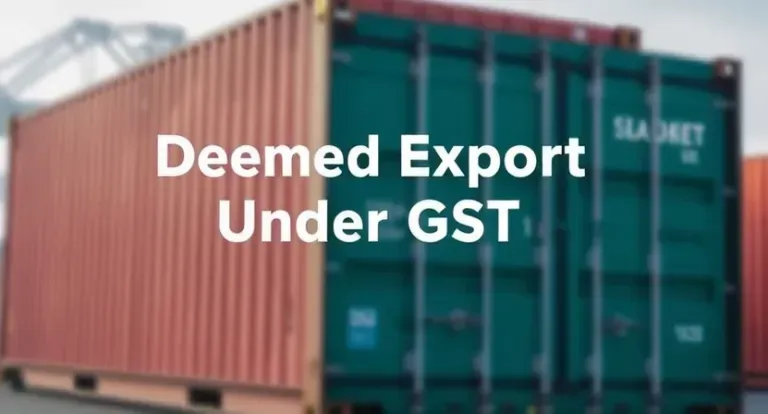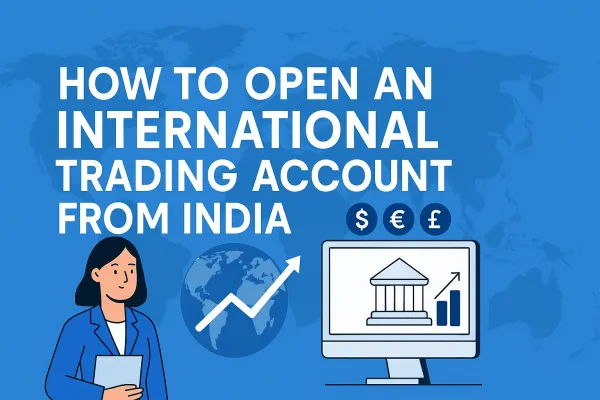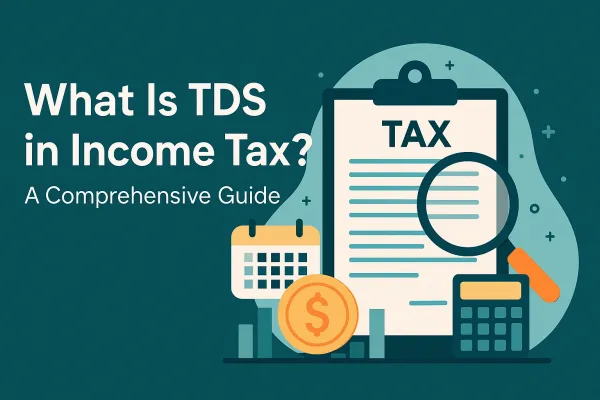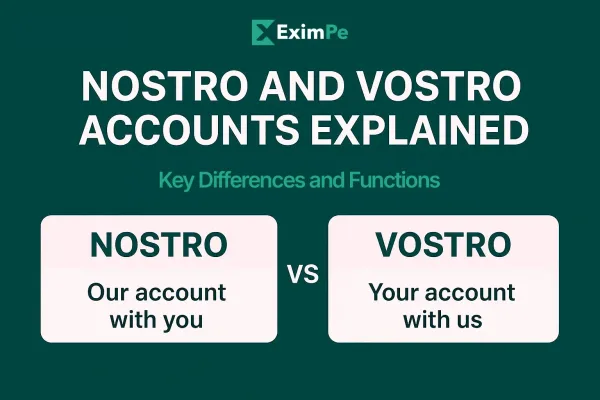Deemed Exports under GST | Procedure for Refund

Under India's Goods and Services Tax (GST) structure, deemed exports significantly support domestic manufacturing and enhance competitiveness in the international market. Deemed exports essentially comprise supplies of goods manufactured in India that do not physically leave the country but are treated similarly to actual exports for tax purposes. This classification enables suppliers to take advantage of several tax benefits and recoveries. Thus, businesses involved in this category must become aware of the compliance requirements and procedures pertaining to the area.
Understanding Deemed Exports
Deemed exports are defined under Section 2(39) of the Central Goods and Services Tax Act, 2017. Here, it is the supply of goods within India, where payment was received either in Indian rupees or convertible foreign exchange. Such supplies, despite not crossing the international border, qualify for exemptions or recoveries usually enjoyed under the regular export, tax refund in such cases, etc.
Key Characteristics of Deemed Exports
- Goods Manufactured in India: The goods for deemed exports should be manufactured within India. This ensures the promotion of domestic manufacturing.
- No Physical Export: Unlike a normal export, a deeming export does not represent an outflow of goods from India. In other words, these goods will never leave the country, but at the same time, they can enjoy export-like benefits.
- Payment Terms: Payments for deemed export transactions can be made in Indian rupees or convertible foreign exchange, thereby giving suppliers the leeway to make payments.
- Tax Treatment: Deemed exports are taxable under GST at the time of supply. Unlike regular exports, which are zero-rated, deemed exports attract a payment of GST upfront; however, suppliers can get refunds later.
Categories of Deemed Exports
The Government of India has notified specific categories of supplies that qualify as deemed exports under GST. These categories include:
- Supply to Advance Authorization Holders: The supply of goods from a registered supplier to an Advance Authorization holder constitutes a deemed export.
- Supply to Export Promotion Capital Goods (EPCG) Authorization Holders: Supplies made against EPCG authorization are also considered to be deemed exports.
- Supplies to Export-Oriented Units (EOUs): Supplies made by way of goods to EOUs are considered to be deemed exports as these units are set up solely for export purposes.
- Supply of Gold by Banks or Public Sector Undertakings (PSUs): Supply of gold by banks or PSUs against Advance Authorization is considered as deemed export.
These classifications help streamline the process for businesses engaged in domestic manufacturing while providing them with access to various benefits associated with export activities.
GST Compliance for Deemed Exports
To ensure compliance with GST regulations when dealing with deemed exports, businesses must adhere to specific requirements:
- Tax Payment: Suppliers need to pay GST on deemed export transactions at the time of supply. In contradistinction to regular exports, which enjoy zero ratings, deemed exports would require paying tax upfront.
- Documentation: Proper documentation is always necessary for claims for refunds in respect of GST paid for deemed exports. Suppliers have to maintain all the details of transactions undertaken, and invoice supplies must be under the GST regime.
- Refund Application: After paying GST on deemed export supplies, the suppliers can apply for a refund through the prescribed procedure under Rule 89 of the CGST Rules, 2017.
- Acknowledgment from Tax Authorities: The suppliers should obtain an acknowledgment from relevant tax authorities regarding receiving goods by recipients classified as Advance Authorization or EPCG holders.
Procedure for Claiming Refund on Deemed Exports
Claiming a refund on GST paid for deemed exports involves several steps:
Step 1: Prepare Documentation
- Suppliers will need to develop an all-inclusive document that shall contain a statement accompanied by an invoice-wise list of deemed export supplies that must be in the document.
- Jurisdictional tax official's acknowledgment stating that the recipient has received the goods.
- An undertaking by the recipient that this supply shall not be available for claiming an input tax credit (ITC).
Step 2: File Refund Application
Once the suppliers collect all the documents, they can apply for a refund through the GST portal. The application shall contain:
- All details regarding the GST paid with respect to deemed export supplies.
- Supporting the documents above.
- Any information needed by the tax authorities.
Step 3: Verification by Tax Authorities
After submitting the form, tax authorities check and verify all the documents attached to the application. They can also seek clarifications or further details if required. It is important to respond to the queries made during this process well in time.
Step 4: Refund Processing
After verification is successful, tax authorities will process the refund application and issue a refund order. The refund amount will be credited to the supplier's bank account based on the information registered.
Benefits of Deemed Exports
Engaging in deemed exports offers several advantages for businesses:
- Cash Flow Management: It improves cash flow management and reduces the load on finances since suppliers can claim refunds on the GST paid in the case of deemed exports.
- Promoting Domestic Manufacturing: It encourages the development of domestic manufacturing as this classification provides incentives to manufacturers that are almost similar to those available to actual exporters.
- Competitive Advantage: Businesses engaged in deemed exports would gain a competitive advantage as the international market access would not incur the extra costs associated with physical exports.
- Access to Special Licenses: Manufacturers with their deemed exports may also be eligible for special import licenses to import raw materials at reduced costs.
Final Thoughts
Once you have an understanding of the complexities of the present treatment of deemed exports under GST and how to go about filing for refunds, it becomes easier to control your compliance activities. You need to look into all documentation related to your transaction and ensure that it is consistent with GST authority measures. In this manner, you will look to streamline your operations and better your financial health while taking advantage of all the benefits provided within this structure. Keep updated on any changes or new policies related to deemed exports to change the strategy based on that and make more out of this increasing sector for international trade.



